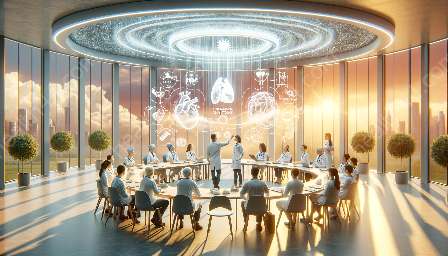Stroke rehabilitation plays a crucial role in helping individuals regain independence and improve overall health following a stroke. This comprehensive guide delves into the various aspects of stroke rehabilitation, including therapies, exercises, and strategies to assist stroke patients in their recovery journey.
Understanding Stroke and Its Impact
A stroke occurs when the blood supply to the brain is disrupted, leading to damage and potential loss of function. It is a life-altering event that can result in physical, cognitive, and emotional challenges. Effective rehabilitation is essential for maximizing recovery, restoring mobility, and enhancing the overall quality of life for stroke survivors.
Goals of Stroke Rehabilitation
The primary goals of stroke rehabilitation are to:
- Foster recovery of lost or impaired skills
- Enhance mobility and functional independence
- Address cognitive deficits and emotional well-being
- Prevent secondary complications
Comprehensive Stroke Rehabilitation Program
A comprehensive stroke rehabilitation program encompasses a multidisciplinary approach, involving healthcare professionals such as physiatrists, physical therapists, occupational therapists, speech-language pathologists, and social workers. This collaborative effort aims to address the diverse needs of stroke survivors and tailor rehabilitation plans to individual abilities and goals.
Therapies and Interventions
Stroke rehabilitation often involves a range of therapies and interventions, including:
- Physical therapy to improve strength, balance, and gait
- Occupational therapy to regain skills for activities of daily living
- Speech therapy to address communication and swallowing difficulties
- Psychological counseling to support emotional adjustment and mental well-being
Exercises and Activities
Exercise is a critical component of stroke rehabilitation, helping to promote recovery, improve mobility, and prevent muscle atrophy. Tailored exercise programs may include:
- Strength training to rebuild muscle strength
- Balance exercises to reduce the risk of falls
- Mobility drills to enhance walking and movement
- Cognitive exercises to improve memory and attention
Assistive Devices and Adaptive Strategies
Assistive devices and adaptive strategies play a pivotal role in facilitating independence and participation in daily activities for stroke survivors. These may include:
- Wheelchairs and mobility aids
- Splints and orthoses for muscle support and joint stability
- Adaptive kitchen and bathroom equipment
- Communication aids and assistive technology
Home-Based Rehabilitation
Many stroke survivors benefit from home-based rehabilitation programs, which enable them to continue their recovery in familiar surroundings. Home-based interventions may involve:
- Adapting the home environment for safety and accessibility
- Regular exercise regimens guided by a therapist
- Support and guidance for family caregivers
- Telemedicine and virtual therapy sessions
Role of Nutrition and Lifestyle Modification
Optimal nutrition and healthy lifestyle habits are paramount for stroke survivors. A well-balanced diet, adequate hydration, and physical activity contribute to overall well-being and aid in the recovery process. Lifestyle modifications, such as smoking cessation and stress management, are also essential for reducing the risk of future strokes and improving long-term health outcomes.
Reintegration into Daily Life
Reintegrating into daily life post-stroke involves overcoming physical and cognitive challenges while seeking social support and community engagement. Encouraging participation in social activities, volunteer work, and support groups can enhance the overall quality of life for stroke survivors and promote a sense of belonging and purpose.
Long-Term Management and Follow-Up
Stroke rehabilitation is an ongoing process that continues beyond the initial recovery phase. Long-term management and follow-up care are crucial for monitoring progress, addressing potential setbacks, and adjusting rehabilitation strategies to meet evolving needs and goals.
Conclusion
Stroke rehabilitation is a dynamic and personalized journey that aims to restore health, independence, and vitality for individuals affected by stroke. By embracing a holistic approach that combines physical, cognitive, emotional, and social aspects of recovery, stroke rehabilitation endeavors to empower survivors and enrich their lives.


